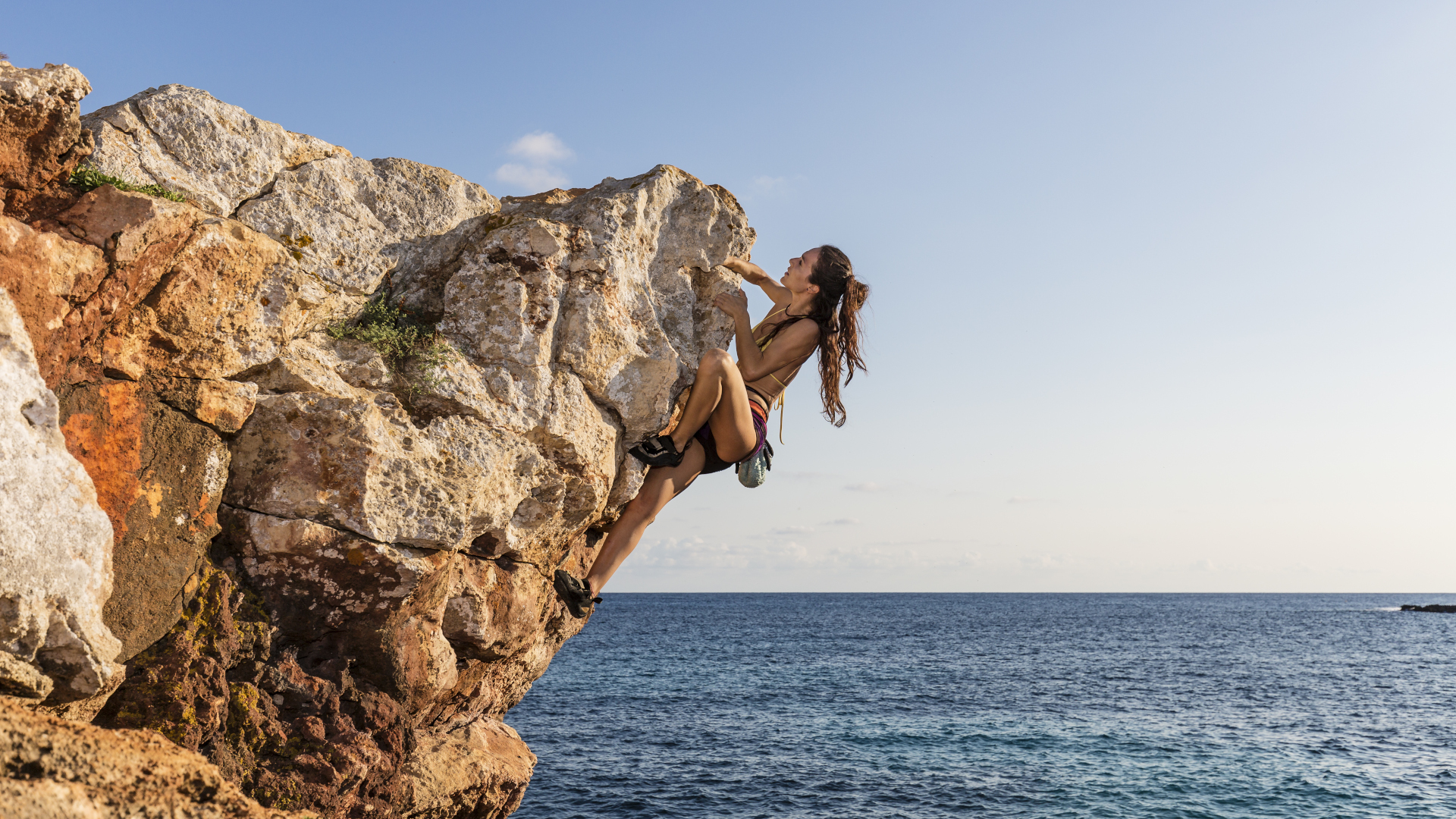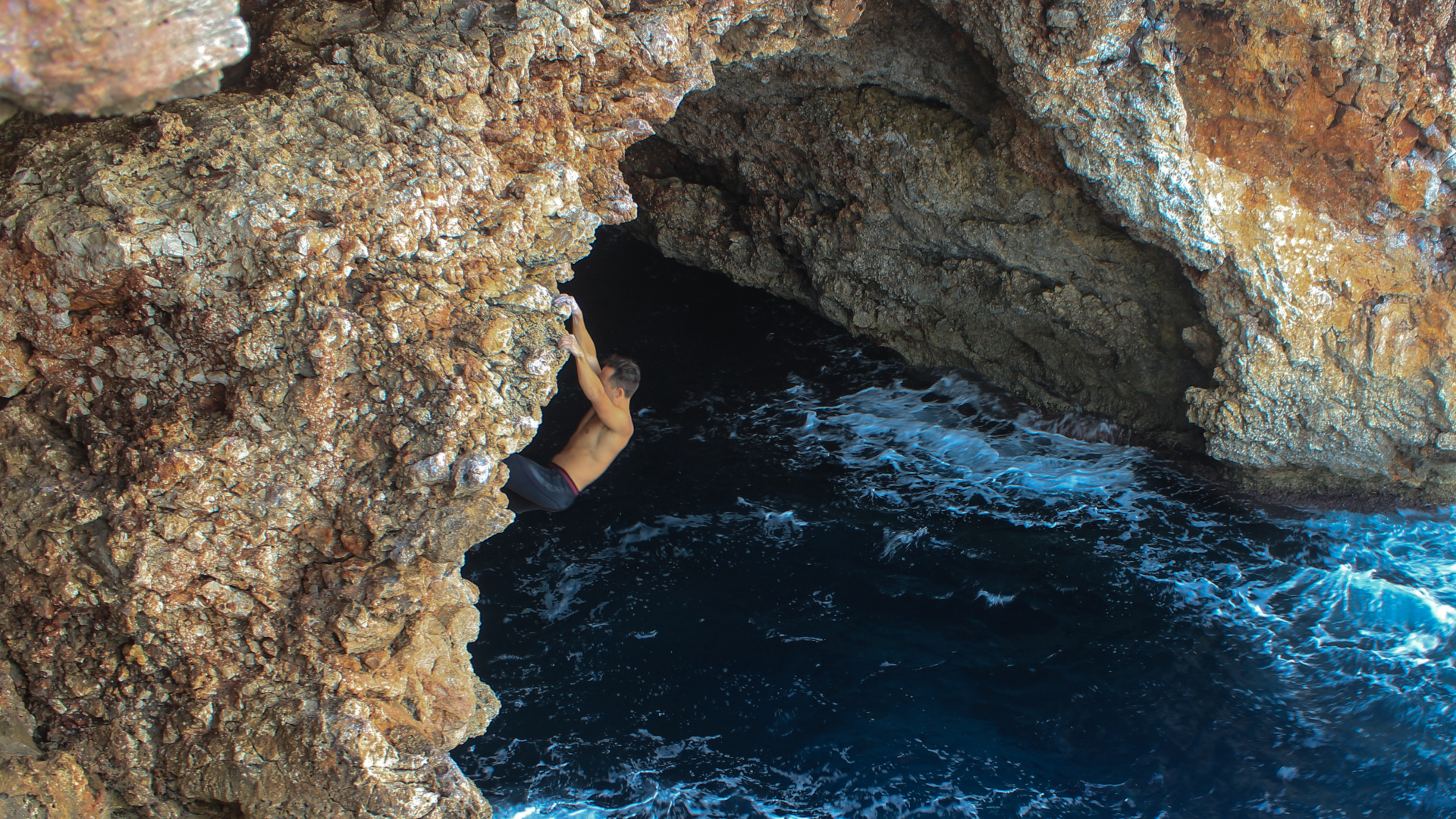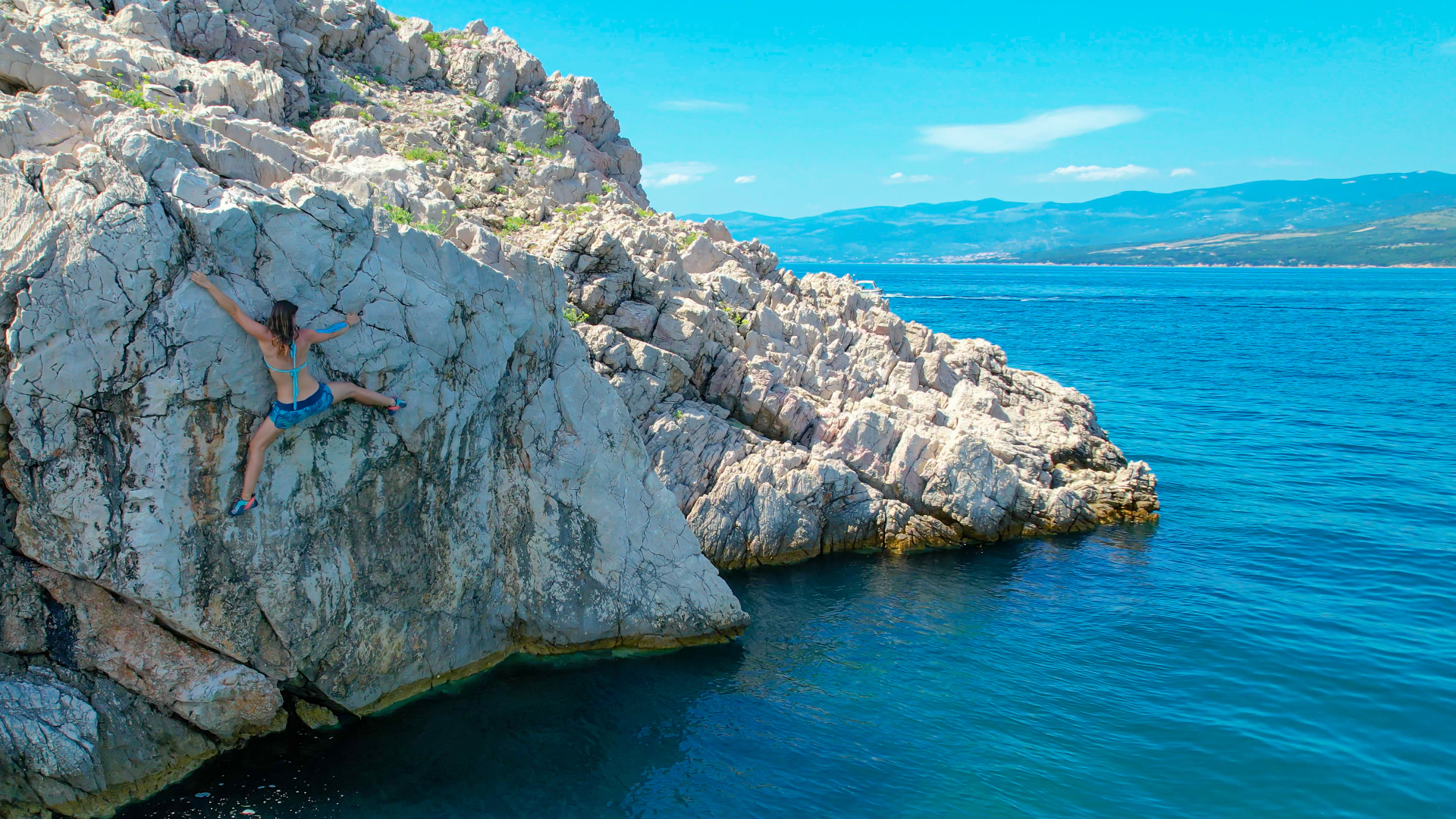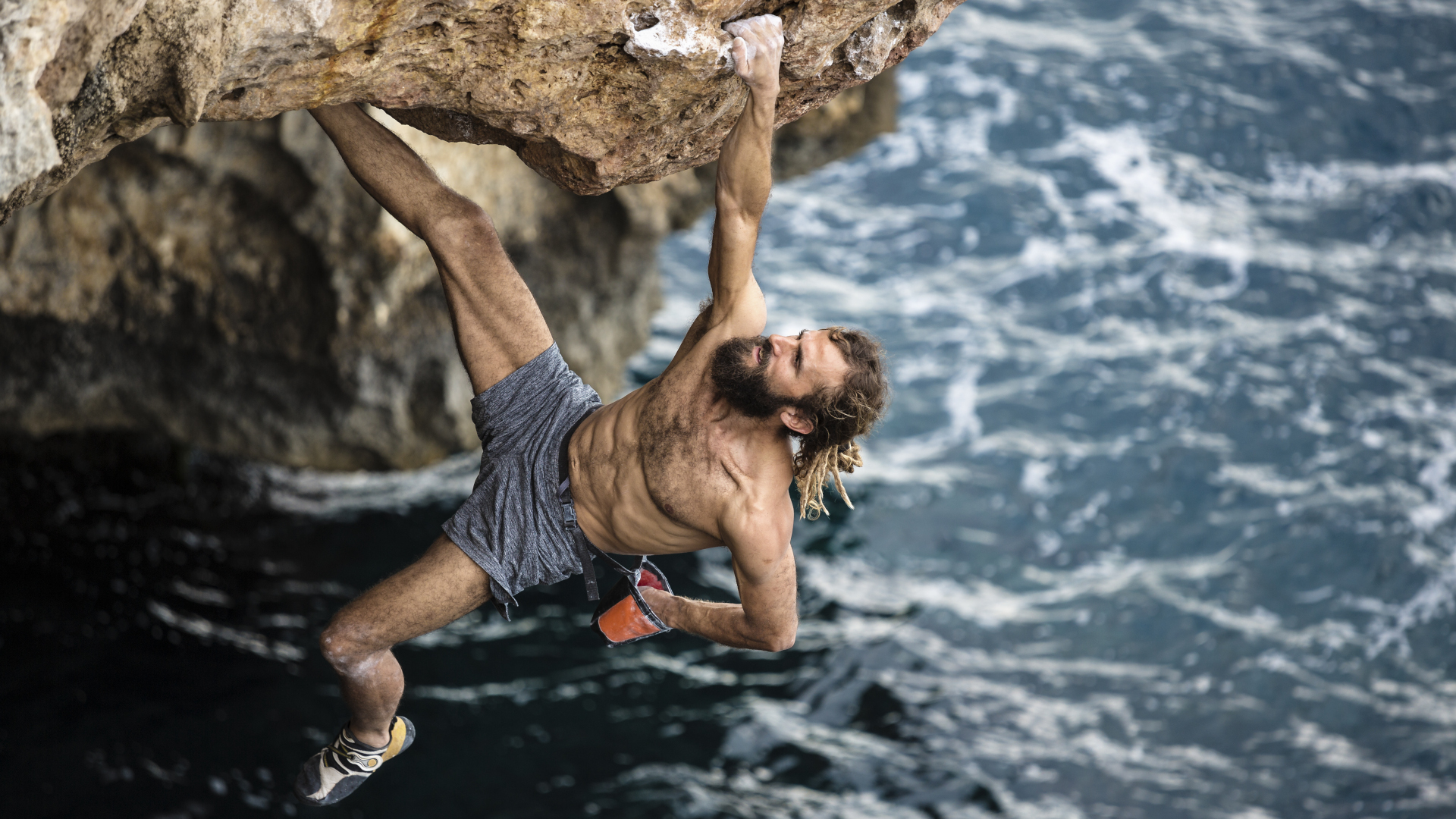What is deep water soloing?
What is deep water soloing? Meet the thrill-seekers adventure sport that will test your climbing skills and take you to some of the most beautiful spots on the planet

Are you an adrenaline junkie looking for extreme thrills that combine your love of climbing with cliff jumping? Look no further than deep water soloing, a truly wild adventure sport that will test your climbing skills and take you to some of the most beautiful spots on the planet.
What is deep water soloing?
Deep water soloing is essentially bouldering and free soloing (climbing without any protective gear) but over a body of water deep enough that you can safely fall into. DWS has its roots in Mallorca, where the late great climber Miguel Riera and his friends popularized it in the 1970s after being forced out of other popular climbing spots on the island by overcrowding. They coined the term “psicobloc” to describe their new pastime, which actually means “psycho bouldering” but more on that in a moment. Since then, DWS has taken hold in coastal areas of southwest England as well as over lakes, rivers and coastal areas of North America from Austin, TX to British Columbia.
Legendary climber Chris Sharma is credited for helping to propel DWS into the mainstream in the early 2000s with his first ascent of Es Pontas in Mallorca, an astounding 9a+ route on a natural rock arch over the sea. You can watch his climb in the 2007 documentary King Lines.

How safe is deep water soloing?
If you’re a confident swimmer and climber, you might be thinking to yourself that DWS sounds far safer than, say, free soloing El Capitan where all there is to break your fall is unforgiving granite, but the truth is a little more complicated than that. Remember, the birth name of this sport is psycho bouldering – any time you’re climbing without safety gear, you obviously up the ante of more consequences when you take a plunge. Water seems soft when you jump into it from the side of the swimming pool but hit it from 300ft and it feels a lot like concrete.
Then of course there’s the issue of your form while falling – it’s one thing if you’re used to being able to practice perfect form from the diving board, but loosing your undercling on a roof when you’re going for a heel hook doesn't give you a ton of time to reorient yourself and land safely. And finally, when it comes to recreating in the water, you’ve got all the usual dangers from cold water shock, dangerous currents and tide levels and good old jellyfish.
All this is to say, if you’re thinking of going DWS for the first time, it’s highly advisable to go out with an experienced guide and you should never go alone.

What do you need for deep water soloing?
In terms of gear, you’re going to be free soloing so technically speaking, you don’t need much. You’ll obviously want your climbing shoes (remember to clean them afterwards so the salt doesn’t degrade the rubber) and some climbing chalk since your hands are more likely to get wet – a bottle of liquid climbing chalk is best, naturally. Other than that, a pair of lightweight nylon running shorts made from non-absorbent fabric like nylon with zipped pockets for your chalk and a form fitting synthetic top that you can swim in should do it. In addition, it can be nice to have a pair of goggles for when you land, both to protect your eyes from the salt and also so you can actually enjoy your time in the water.
All the latest inspiration, tips and guides to help you plan your next Advnture!
That said, it’s not necessarily a low-maintenance and low-cost pursuit. You may need access to a boat or kayak so that your partner can pick you up when you fall and there are climbs that you’ll need gear to reach. For example you might need to belay down to the beginning of your route, and in that case it’s advisable to rig a climbing harness out of slings that you can leave clipped to the rope once you start soloing.
What you really need for DWS, however, isn’t so much gear as it is expertise and knowledge. You want to have a good working knowledge of how to read tide charts for the area since the depth of the water below you will vary in coastal areas. You also want to know the water temperature to be sure it’s safe, and you should practice falling before you go so that you’re accustomed to landing feet first, in the shape of a pencil.

Where can you solo deep water in the US?
Obviously, Mallorca and the other Balearic islands are still the undisputed mecca of DWS adventures, in addition to highly coveted routes in Portugal and Thailand, but if you’re looking for locations closer to home, here are some popular spots:
- Hawaii: South Point on the Big Island and Ka’anapali in Maui
- Texas: Lake Travis-Pace Bend Park (35 miles northwest of Austin)
- Utah: Lake Powell
- West Virginia: Summersville Lake
- Washington: Banks Lake
Where can you solo deep water in the UK?
If you’re in the UK, all you need to do is head to the southwest coast of England and Wales where you’ll find some great, albeit chilly, DWS spots:
- Devon
- Cornwall
- Pembroke
- Swanage
- Lulworth Cove
- Portland
Julia Clarke is a staff writer for Advnture.com and the author of the book Restorative Yoga for Beginners. She loves to explore mountains on foot, bike, skis and belay and then recover on the the yoga mat. Julia graduated with a degree in journalism in 2004 and spent eight years working as a radio presenter in Kansas City, Vermont, Boston and New York City before discovering the joys of the Rocky Mountains. She then detoured west to Colorado and enjoyed 11 years teaching yoga in Vail before returning to her hometown of Glasgow, Scotland in 2020 to focus on family and writing.

